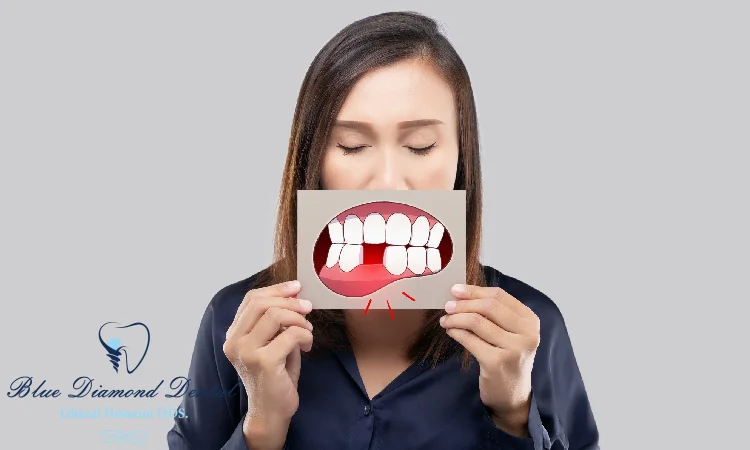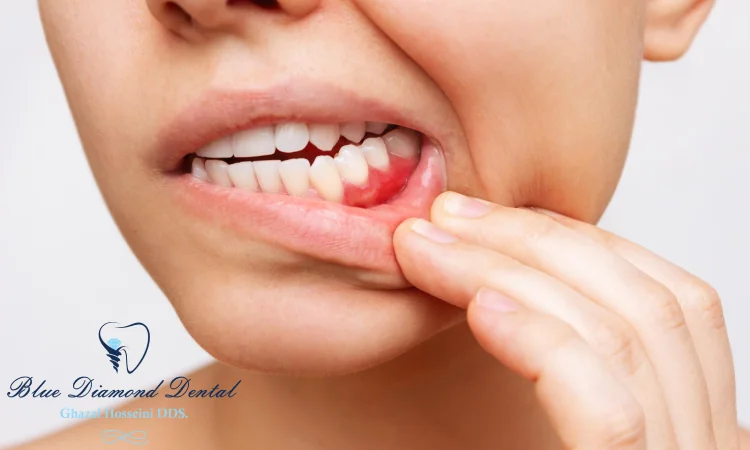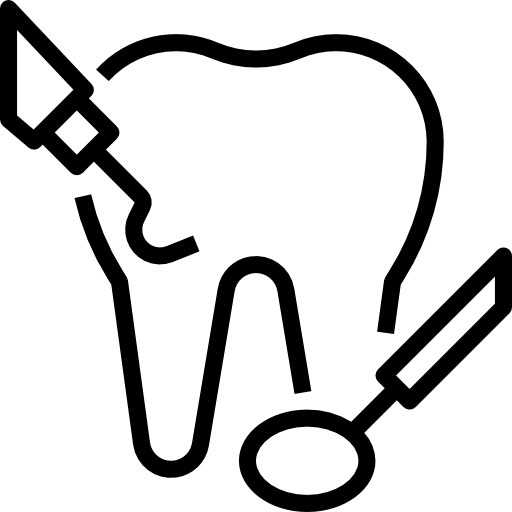
Gum Disease: Causes, Symptoms, Treatment, and Prevention
Gum disease is one of the most prevalent oral health problems in the world, affecting nearly half of the adult population. It can have a significant impact on your smile, your confidence, and your overall well-being. In this article, you will learn:
- What is gum disease and what are the different stages of gum disease?
- What are the causes and risk factors of gum disease?
- What are the signs and symptoms of gum disease and how is it diagnosed?
- What are the treatment options and home remedies for gum disease?
- How can you prevent gum disease and maintain good oral hygiene?
What is gum disease and what are the different stages of gum disease?
Gum disease, also known as periodontal disease, is a chronic inflammatory condition that affects the gums and the supporting structures of the teeth, such as the bone, ligaments, and cementum. It is caused by the accumulation of plaque and tartar on the teeth and along the gum line. Plaque is a sticky film of bacteria that forms on the teeth after eating and drinking. Tartar is the hardened form of plaque that can only be removed by professional dental cleaning.
If plaque and tartar are not removed regularly, they can irritate and inflame the gums, causing gingivitis, the mildest form of gum disease. Gingivitis is characterized by red, swollen, and bleeding gums that may be sensitive or painful. Gingivitis is usually reversible with proper oral hygiene and dental care.

However, if gingivitis is left untreated, it can progress to periodontitis, the more severe form of gum disease. Periodontitis is characterized by the destruction of the gum tissue and the supporting structures of the teeth, leading to the formation of pockets or spaces between the teeth and the gums. These pockets can harbor more bacteria and infection, causing further damage and inflammation. Periodontitis can result in tooth mobility, tooth loss, and bone loss. Periodontitis is not reversible, but it can be controlled with professional dental treatment and maintenance.
There are different types and stages of periodontitis, depending on the extent and severity of the damage. Some of the common types and stages are:
- Chronic periodontitis. This is the most common type of periodontitis, which affects mostly adults. It is characterized by slow and progressive destruction of the gums and the supporting structures of the teeth, leading to tooth loss over time.
- Aggressive periodontitis. This is a rare type of periodontitis, which affects mostly young people. It is characterized by rapid and severe destruction of the gums and the supporting structures of the teeth, leading to tooth loss in a short period of time.
- Necrotizing periodontitis. This is a serious type of periodontitis, which affects mostly people with compromised immune systems, such as those with HIV, cancer, or malnutrition. It is characterized by necrosis or death of the gum tissue, the supporting structures of the teeth, and the bone, leading to pain, infection, and tooth loss.
- Periodontitis as a manifestation of systemic diseases. This is a type of periodontitis, which is associated with certain systemic diseases, such as diabetes, cardiovascular disease, or rheumatoid arthritis. It is characterized by the worsening of the gum disease due to the underlying systemic condition, leading to increased complications and tooth loss.
What are the causes and risk factors of gum disease?
The main cause of gum disease is the accumulation of plaque and tartar on the teeth and along the gum line, which leads to bacterial infection and inflammation of the gums and the supporting structures of the teeth. However, there are also other factors that can increase the risk or severity of gum disease, such as:

- Poor oral hygiene. Failing to brush and floss your teeth regularly and properly can allow plaque and tartar to build up on your teeth and gums, increasing the chances of developing gum disease.
- Smoking or tobacco use. Smoking or using tobacco products can impair the blood flow and the healing capacity of the gums, making them more susceptible to infection and inflammation. Smoking or using tobacco products can also stain your teeth and gums, making them look unhealthy and unattractive.
- Hormonal changes. Hormonal changes, such as those that occur during puberty, pregnancy, menopause, or oral contraceptive use, can affect the blood supply and the sensitivity of the gums, making them more prone to swelling, bleeding, and infection.
- Medications. Certain medications, such as antidepressants, antihistamines, or blood pressure drugs, can affect the saliva production and the composition of the mouth, making it more dry and acidic. This can create a favorable environment for plaque and bacteria to grow and thrive, increasing the risk of gum disease. Some medications, such as anticonvulsants, immunosuppressants, or calcium channel blockers, can also cause gum overgrowth or enlargement, which can interfere with oral hygiene and dental care.
- Genetics. Some people may have a genetic predisposition or susceptibility to gum disease, meaning that they are more likely to develop gum disease than others, even if they have the same oral hygiene and lifestyle habits. This can be due to inherited traits, such as the shape and size of the teeth and gums, the immune system response, or the bacterial flora of the mouth.
- Stress. Stress can affect the immune system and the inflammatory response of the body, making it more difficult to fight off infection and inflammation. Stress can also affect the oral hygiene and lifestyle habits of the person, making them more likely to neglect their teeth and gums, or to resort to smoking, drinking, or eating unhealthy foods.
- Diet and nutrition. Diet and nutrition can affect the health and strength of the teeth and gums, as well as the balance of the oral microbiome. Eating a balanced and nutritious diet, rich in vitamins, minerals, antioxidants, and fiber, can help prevent tooth decay and gum disease, by providing the necessary nutrients and enhancing the immune system. Eating foods that are high in sugar, starch, or acid, can increase the production of plaque and bacteria, and erode the enamel and the gums, making them more vulnerable to decay and infection.
- Other diseases and conditions. Other diseases and conditions, such as diabetes, cardiovascular disease, rheumatoid arthritis, or HIV, can affect the blood sugar levels, the blood circulation, the immune system, and the inflammatory response of the body, making it more difficult to control and treat gum disease. Gum disease can also affect the severity and complications of these diseases and conditions, by increasing the risk of infection, inflammation, and blood clots.
What are the signs and symptoms of gum disease and how is it diagnosed?
The signs and symptoms of gum disease can vary depending on the type and stage of the disease. However, some of the common signs and symptoms are:

- Red, swollen, or tender gums that bleed easily when brushing or flossing
- Receding gums that make the teeth look longer or expose the roots
- Bad breath or bad taste in the mouth that persists despite good oral hygiene
- Pus or discharge between the teeth and the gums
- Loose or shifting teeth that affect the bite or the fit of dentures
- Pain or sensitivity when chewing or biting
- Changes in the appearance of the smile or the facial profile
If you notice any of these signs and symptoms, you should see your dentist as soon as possible, as they may indicate a serious infection that requires immediate attention. Your dentist will examine your mouth and teeth, and ask you about your medical history, medications, and lifestyle habits. Your dentist will also measure the depth of the pockets or spaces between your teeth and your gums, using a special instrument called a periodontal probe. This will help your dentist assess the extent and severity of the gum disease, and determine the best course of treatment.
Your dentist may also take X-rays or other imaging tests, such as a CT scan or an MRI, to evaluate the condition and structure of your teeth, gums, and bone. This will help your dentist identify any damage or loss of bone or tissue, and plan for any surgical or restorative procedures.
What are the treatment options and home remedies for gum disease?
The treatment options and home remedies for gum disease depend on the type and stage of the disease, as well as the overall health and condition of the patient. The main goals of the treatment are to:
- Remove the plaque and tartar from the teeth and the gums
- Control the infection and inflammation of the gums and the supporting structures of the teeth
- Restore the function and appearance of the teeth and the smile
- Prevent the recurrence or progression of the disease
Some of the common treatment options and home remedies are:
- Professional dental cleaning. This is the first and most basic step of the treatment, which involves removing the plaque and tartar from the teeth and the gum line, using special instruments, such as a scaler, a curette, or an ultrasonic device. This can help reduce the inflammation and bleeding of the gums, and improve the oral hygiene and health of the patient. Professional dental cleaning should be done at least twice a year, or more often if recommended by your dentist.
- Scaling and root planing. This is a more intensive and deeper form of professional dental cleaning, which involves removing the plaque and tartar from the teeth and the roots, using special instruments, such as a scaler, a curette, or an ultrasonic device. This can help smooth and clean the root surfaces, and reduce the depth of the pockets or spaces between the teeth and the gums. This can help prevent further infection and inflammation, and improve the attachment and health of the gums and the supporting structures of the teeth. Scaling and root planing may require more than one visit to the dentist, and may be done under local anesthesia or sedation.
- Medications. This is an adjunctive or supplementary form of treatment, which involves using antibiotics, antiseptics, or anti-inflammatory drugs, to control the infection and inflammation of the gums and the supporting structures of the teeth. These medications can be applied or delivered in various ways, such as mouth rinses, gels, creams, chips, or pills. These medications can help reduce the amount of bacteria and plaque in the mouth, and enhance the healing and recovery of the gums and the supporting structures of the teeth. However, these medications cannot replace the mechanical removal of plaque and tartar by professional dental cleaning, and they may have some side effects or interactions with other drugs.
- Surgery. This is a more invasive and complex form of treatment, which involves making incisions or flaps in the gums, and lifting them to expose the roots and the bone. This can help remove the plaque and tartar that are inaccessible by scaling and root planing, and reshape or regenerate the bone and the tissue that have been damaged or lost by the disease. There are different types of surgical procedures, such as flap surgery, bone grafting, guided tissue regeneration, or soft tissue grafting, depending on the extent and severity of the damage. Surgery may require local anesthesia or sedation, and may have some risks or complications, such as bleeding, infection, or pain.
- Laser therapy. This is a newer and alternative form of treatment, which involves using a laser beam to remove the plaque and tartar from the teeth and the roots, and to stimulate the healing and regeneration of the gums and the supporting structures of the teeth. Laser therapy can be less painful and invasive than surgery, and can reduce the bleeding, swelling, and infection of the gums. However, laser therapy may not be suitable for everyone, and it may not be as effective or predictable as other forms of treatment. Laser therapy may also have some risks or complications, such as thermal damage, tissue scarring, or nerve injury.
How can you prevent gum disease and maintain good oral hygiene?
The best way to prevent gum disease and maintain good oral hygiene is to follow these simple steps:
- Brush your teeth twice a day with a soft-bristled toothbrush and a fluoride toothpaste, and floss once a day to remove plaque and bacteria from your teeth and gums
- Rinse your mouth with water or a mouthwash after eating or drinking, especially sugary or acidic foods and drinks, to neutralize the acids and prevent enamel erosion
- Visit your dentist for regular check-ups and cleanings every six months, or as recommended by your dentist, to detect and treat any dental problems or diseases, and to remove any plaque and tartar that cannot be removed by brushing and flossing
- Quit smoking or using tobacco products, as they can impair the blood flow and the healing capacity of the gums, and increase the risk of gum disease and other oral and general health problems
- Eat a balanced and nutritious diet, rich in vitamins, minerals, antioxidants, and fiber, which can support your immune system and your oral health, and prevent tooth decay and gum disease
- Drink plenty of water, as it can keep your mouth hydrated and wash away any food particles and bacteria that may cause plaque and tartar
- Manage your stress levels, as stress can affect your immune system and your inflammatory response, and make it harder to fight off infection and inflammation
- Seek treatment for any systemic diseases or conditions, such as diabetes, cardiovascular disease, or rheumatoid arthritis, as they can affect your oral health and your gum disease, and vice versa






